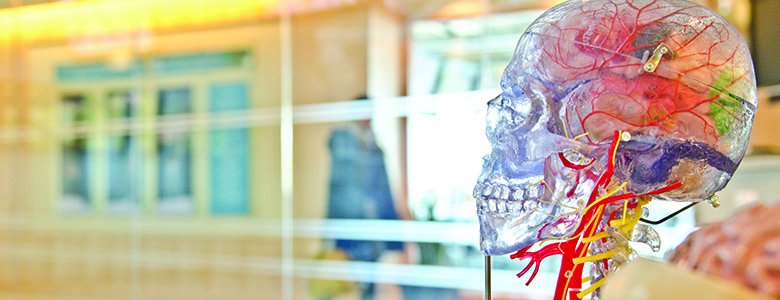Brain scans reveal common patterns can predict variations in ADHD

Distinct brain patterns can help explain variations in the way children present with attention deficit hyperactivity disorder (ADHD), paving a course towards improved treatment and support for the common neurodevelopmental disorder.
Using neuroimaging techniques, The Children's Attention Project, run at the Murdoch Children's Research Institute (MCRI), found that certain patterns across the whole brain appear to be linked to ADHD symptoms, development and cognition.
The findings, published online in the American Journal of Psychiatry, suggest that the different ways ADHD presents in children may stem from a combination of factors that have specific biological foundations in the brain.
Lead investigator Associate Professor Tim Silk from Deakin University's School of Psychology said that to improve treatments or predict the likely progression of ADHD it is important to understand what is happening in the brain.
"We still don't know what the underlying mechanisms are in ADHD, but it is quite clear that it is not isolated to one or two areas of the brain," Assoc. Prof. Silk said.
ADHD is a neurodevelopmental disorder that affects five per cent of school-aged children. It is typically characterised by inattention, impulsivity and hyperactivity – although not all children with these behaviours will have ADHD.
No biological marker can detect ADHD, with assessments by a doctor or psychologist currently forming the basis of formal diagnosis. The condition is treated with behaviour strategies, counselling and medication as required.
The study combined multiple magnetic resonance images to examine the brains of 160 Australian children aged nine to 12 years, 70 of whom met diagnostic criteria for ADHD. Once they had identified a set of brain patterns, the researchers demonstrated that those patterns could predict ADHD symptoms in an independent group of children.
The researchers identified four different patterns across the whole brain, each associated with unique profiles. These covered demographic characteristics such as gender and socio-economic status, early life variables such as birth weight and smoking in pregnancy, cognitive factors such as thinking, language and academic skills, and ADHD related factors such as typical symptoms, medication use, social difficulties and quality of life.
They found two brain patterns particularly relevant to ADHD. In one, children with less developmentally mature brains showed more hyperactive symptoms and were more likely to be receiving medication for ADHD. The other pattern reflected typical clinical features of ADHD, such as increased likelihood of being male, having hyperactivity symptoms, social problems and irritability, lower cognitive and academic scores and ADHD medication use.
"Differences in the brain's overall structure may give rise to functional changes across brain networks that are responsible for cognitive function, sensory and motor processes," said Assoc. Prof. Silk, who is also Honorary Fellow Manager at MCRI and Honorary Senior Fellow, Department of Paediatrics, University of Melbourne.
"Recent advances in MRI analyses allow us to better examine these variations across tissue types and individuals."
He said the ultimate long-term goal of the research was to see if neuroimaging could provide objective measures to inform diagnosis of ADHD and customised treatments.
The Neuroimaging of the Children's Attention Project is funded by the National Medical Health and Research Council of Australia (NHMRC; project grant #1065895). This is part of the larger Children's Attention Project (NHMRC project grant #1008522)



